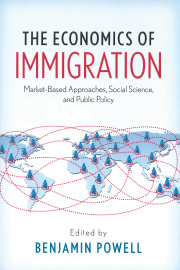The strike by 47,000 International Longshoremen’s Association (ILA) members, which shut down all 36 East and Gulf Coast ports, has ended after an agreement on wages. However, the most important issue, automation, remains unresolved.
The union which wanted a 77 percent pay increase over six years, and the U.S. Maritime Alliance, which was negotiating for the ports, wanted a 50 percent increase, compromised and agreed to a 62 percent increase. The compromise on wages ended the strike. But the battle that is important for our future is over the union’s demand to halt port automation. And that fight is still on the table when the two parties return to the bargaining table on Jan. 15.
The two main jobs at ports—operating cranes and moving shipping containers around—were traditionally performed by union workers. But these tasks can now be automated and run by computer. People oversee the operations from a control room, but far fewer union workers are needed on the ground.
Only the Los Angeles and Long Beach ports are fully automated in the U.S., and three East Coast ports are classified as partially automated. But the global trend of 63 fully automated ports, is clear.
Picketers have held signs that read, “Automation Hurts Families: ILA Stands For Job Protection.” New Orleans local union president Henry Glover Jr. said that although automation could make work easier, “they’re using it to kill jobs. We don’t want them to implement anything that would take our jobs out.”
The unions had a similar reaction in the 1960s when Malcom McLean introduced the modern shipping container. Before the introduction of shipping containers, roughly 50 percent of the transport cost of a 4,000-mile shipment occurred at the ports on each end of the journey. McLean Industries reported to shareholders that “A containership can be loaded and unloaded in almost one-sixth of the time required for a conventional cargo ship and with about one-third of the labor.”
AFL-CIO president George Meany told his 1963 annual convention that automation is “rapidly becoming a curse to this society.” In response to containerization the East Coast, ILA went on strike in 1962 and 1964. Presidents Kennedy and Johnson both invoked the Taft-Hartley Act and ordered 80-day cooling-off periods that temporarily ended the strikes.
Ultimately, the unions accepted new work rules allowing the mass spread of containerization in exchange for higher and more stable wages and payoffs to displaced workers. The result was a revolution in global shipping that dramatically decreased costs. Today, the United States imports more than four times the variety of goods that it did in the early 1970s, in part because of container shipping.
The ILA members are a modern Luddite movement. The Luddites opposed mechanized garment production in the early 19th century on the grounds that it would destroy jobs. Technological progress does eliminate some jobs, but it simultaneously creates others. Ultimately, the total number of jobs in any economy is largely determined by the size of its labor force because we have a limitless desire for goods and services. So opposition to automation does not save jobs on net. It just holds back the shift to more productive employment that ultimately raises living standards.
Unfortunately, President Biden backed the union and refused to invoke the Taft-Hartley Act to temporarily end the strike and instead stated, “Now is not the time for ocean carriers to refuse to negotiate a fair wage for these essential workers.” If the bargaining over port automation in January results in another strike, the new president should follow Kennedy and Johnson’s lead, and pause the strike to encourage an agreement that will allow for automation and technological progress.












